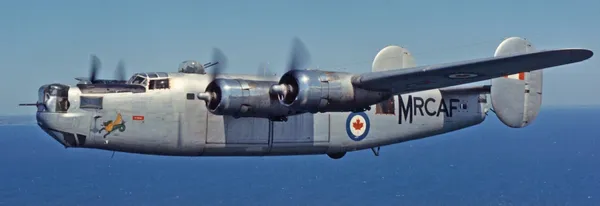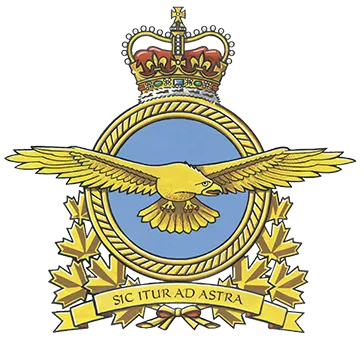Ward, Gordon (Leading Aircraftman)
Killed in Action 1943-September-04


Birth Date: 1919-August-20
Born:
Parents: Son of Sydney and May Ward, of Toronto, Ontario.
Spouse:
Home: Toronto, Ontario
Enlistment:
Enlistment Date: unkown date
Service
RCAF
Unit
10 (BR) Sqn- Squadron
Base
RCAF Stn, Gander Newfoundland
Rank
Leading Aircraftman
Position
aero engine mechanic
Service Numbers
R/152186
Home
Crew or Other Personnel
Liberator 589
Liberator serial: 589

Consolidated Liberator G.R. Mk. VIII, RCAF (Serial No. 11130) ex-USAAF Consolidated (Vultee) B-24L Liberator USAAF (44-50154)
ex-RAF (Serial No. 5009), ex-Indian Air Force (Serial No. HE773).
Currently preserved in the Canada Aviation and Space Museum Ottawa Ontario.
The Consolidated B-24 Liberator was an American heavy bomber flown by the RCAF during the Second Word War. It was designed with a shoulder-mounted, high aspect ratio Davis wing which gave the Liberator a high cruise speed, long range and the ability to carry a heavy bomb load. Early RAF Liberators were the first aircraft to cross the Atlantic Ocean as a matter of routine. In comparison with its contemporaries the B-24 was relatively difficult to fly and had poor low speed performance; it also had a lower ceiling compared with the Boeing B-17 Flying Fortress. Of the roughly 18,500 B-24s built in the USA during the war, 148 were flown by the RCAF on long range anti-submarine patrols, with the B-24 serving an instrumental role in closing the Mid-Atlantic gap in the Battle of the Atlantic. The RCAF also flew a few B-24s post war as transports.
Roughly half of all (RAF) Liberator crews in the China-Burma-India (CBI) Theatre were Canadian by the end of the war. John Muir of Vancouver flew the longest mission of the war: 24hrs, 10mins from Ceylon to Burma and back. (Kyle Hood) Harold Skaarup web page
Aircraft Images
Liberator 589
Liberator Mk. III/V 589
Ex USAAF B-24D-60-CO s/n 42-40447, ex RAF BZ725. Also known as G.R. Mk. V/Can. Coded "D" of No. 10 (Bomber Reconnaissance) Squadron at Gander, Newfoundland, from April 1943. Crashed into Gander Lake at 01:38 on 4 September 1943, 2 miles off end of runway, while taking off for a night training flight. An attempt was made to recover the wreckage, but it slid into deeper water and the effort was abandoned. Official report gave control jamming as possible cause of crash. All 4 occupants killed.1943-04-27 Taken on Strength 2019-08-20
1943-September-04 Accident: 10 Squadron Loc: Gander Lake Newfoundland Names: Bill | Mackenzie | Ward | Young
1944-03-19 Struck off Strength Struck off, after crashing in Gander Lake, Labrador, shortly after take off on 4 September 1943. 4 fatalaties. 2019-08-20
Unit Desciption
10 (BR) Sqn ()
Battle honours
The Second World War
NORTH-WEST ATLANTIC, 1940-1945.

Lineage
Authorized as ‘No.10 (Torpedo Bomber) Squadron’ 1 April 1938.Footnote1
Redesignated 'No.10 (Bomber) Squadron' 28 August 1939.Footnote2
Redesignated 'No.10 (Bomber Reconnaissance) Squadron' 1 September 1939.Footnote3
Disbanded 13 August 1945.Footnote4
Notes:
No lineal connection with '10 Experimental Squadron', of 1967-70. See 10 Experimental Squadron.
Operational history
The Second World War
The squadron flew on anti-submarine operations on the Atlantic Coast under 'Eastern Air Command'.Footnote5
Footnotes
Footnote 1
GO 48/38. Authorized but not formed (AFGO 19/39)
Footnote 2
AFGO 41/39
Footnote 3
AFGO 57/39\
Footnote 4
Secret Organization Order 279, 4 August 1945, file S.17-10-1 (DOE), Kardex 181.009 (D5432)
Footnote 5
AFGO 25/40; Statement and Organization Charts for the Home and Overseas War and BCATP Organization, 15 April 1942, file S.8202, Kardex 181.002 (D421); Memorandum, Notes for CAS, Appendix A, 12 September 1939, Document Collection 77/543
Government of Canada

